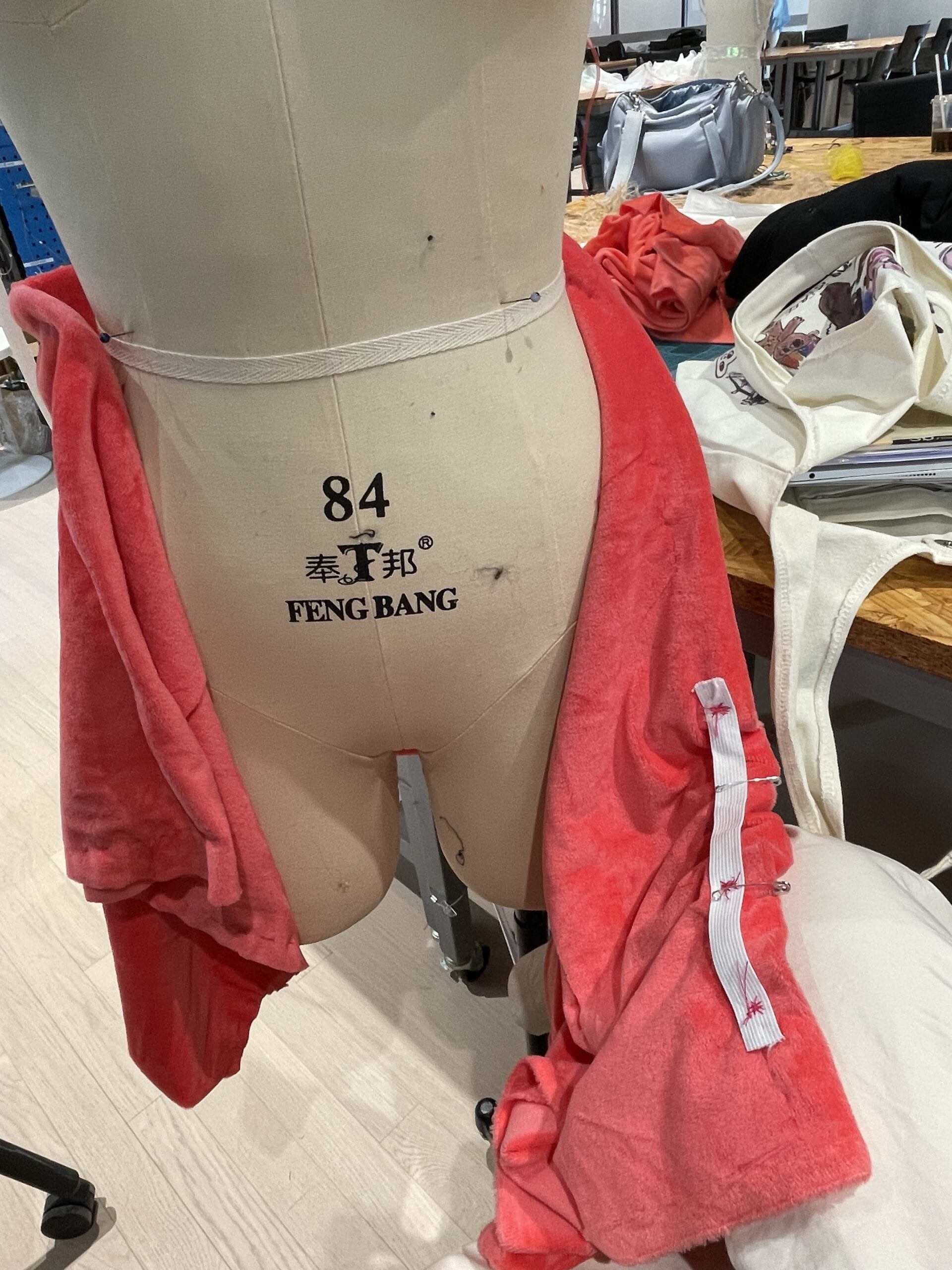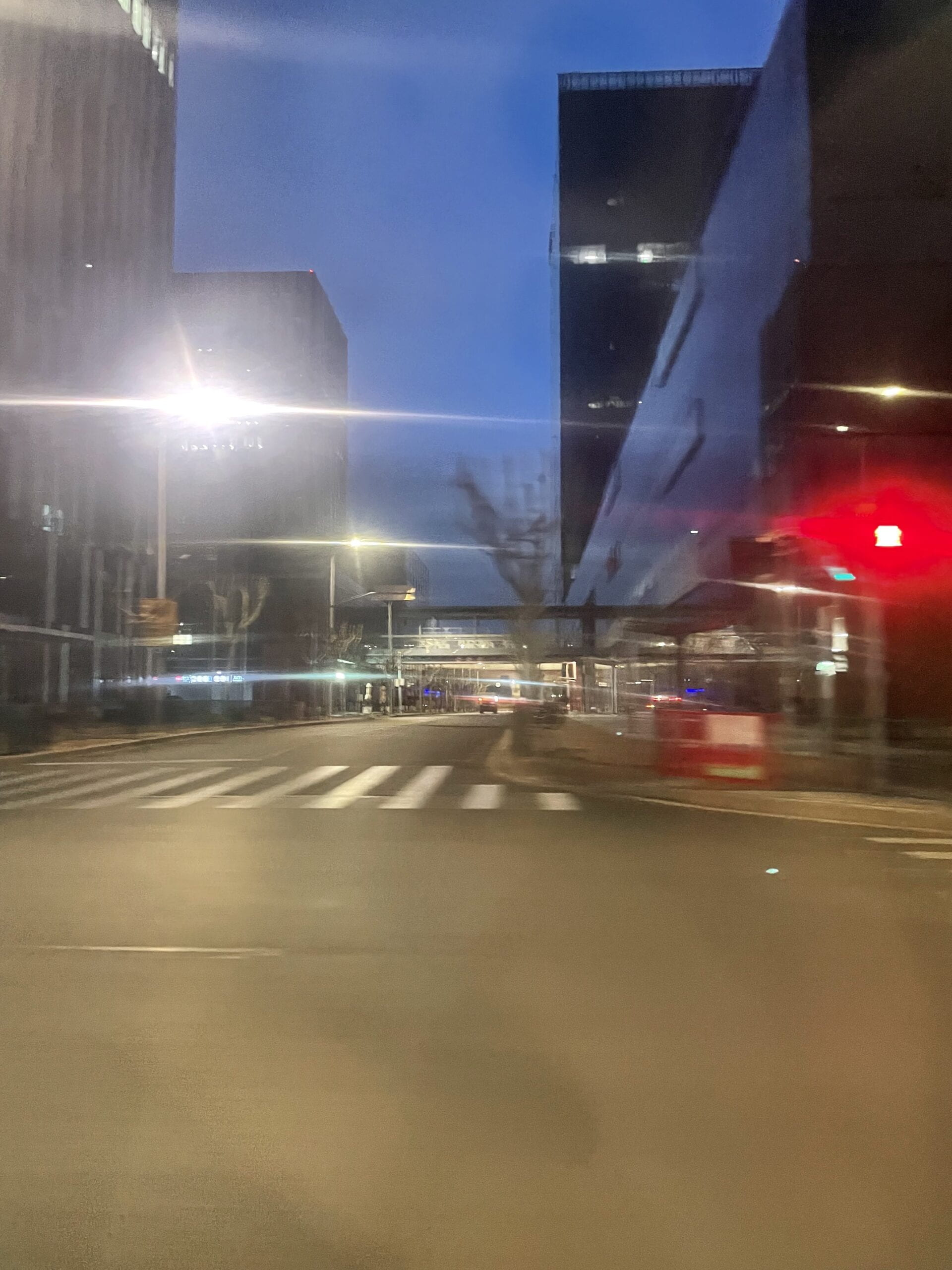#Blog 7: Project 1
Project Title: Glowworm
Charlotte Xu & Younian Liu|Professor Marcela Godoy
CONCEPTION & DESIGN:
Spring is coming and the creatures are looking for lovers.
I wanted to make something that represents a person’s intention to attract the other and also being examined by the person she is trying to attract. The active intention of attracting others is represented with a similar structure of a glowworm, which is an ass that can light up. It is also a slight sarcasm toward the trend of having a bubble butt.
The inspiration for this project comes from a book I read previously called Selfish Genes1. In this book, Dawkins examines childbearing as an evolutionary strategy, arguing that our genes would guide us to choose the spouse that can best reproduce their offspring.
Based on this theory, I try to think about what might affect people’s choice of their spouse and I found the research paper2 by Dewan MC about the influence of pregnancy on women with adolescent idiopathic scoliosis, which concludes that Nulliparity rates were slightly higher among AIS patients, and more frequent infertility treatment was required. Pregnancy-related back pain was common, and while non-disabling, may have been more severe than in healthy women.
And another research3 talks about how this alternation in the spine, Scoliosis, as a tri-planar deformity can impact the gait pattern. This research study concludes that scoliotic subjects have a slower speed of gait due to a shorter stride length and a longer stride time, together with variations in the timing of muscle activation.
So the general logic about this is that the person wearing this costume is trying to attract others, but at the same time, she is also examined in the way that she walks. The brain instinctively tells the other whether she is suitable for reproduction or not, which then leads to the judgment of whether she is suitable to be one’s spouse or not. It shows how vulnerable people are in terms of making their “own decision”. We are in fact heavily affected by the genes we have which are out of our control.
A fake butt is added to augment the body. We add a sensor by the ear so that when the user tried to activate the sensor it kind of makes the motion of tucking her hair behind her ear or running her fingers through the hair. The spine starts from the heart as if the heart is pumping blood. We use plastic pipes and optical fiber to create similar effects as a glowworm and we also use woolen threads so that this project is not only ironic but also sweet and cute because I do not want to criticize the natural selection process, even if it seems a bit offensive if we use the social norms to look at it.
1.Dawkins, R. (2006). The Selfish Gene. Oxford University Press.
2.Dewan MC, Mummareddy N, Bonfield C. The influence of pregnancy on women with adolescent idiopathic scoliosis. Eur Spine J. 2018 Feb;27(2):253-263. doi: 10.1007/s00586-017-5203-7. Epub 2017 Jun 29. PMID: 28664223.
3.Haber, C.K., Sacco, M. Scoliosis: lower limb asymmetries during the gait cycle. Arch Physiother 5, 4 (2015). https://doi.org/10.1186/s40945-015-0001-1.
FABRICATION & PRODUCTION:
After having a rough concept of the work we’re going to do, we decide to start from the heart. We make the heart and the sensor holder with woolen thread and a glue gun. We stuck papers inside of the heart to make it look fluffy.




The sensor we used is the one we did in class. But we made a very silly mistake in that we forgot to use the nonconductive fabric. So, we tried a lot of times and find the values are quite weird. In the end, we asked Maricela about it and figured out what we thought of as mistakes were actually not.

The next thing we thought about is how we should put the butt on. Since we don’t have the suitable fabric or material to make a hard skeleton for this project, we decide to use the fabric in the lab to make a skirt and then put the fake ass inside. We curl up the pipes so that we can have the fiber to go inside to light up the ass.



It is hard to make the optical fiber go through the pipe.

After we test it out with LED, we found out it was too dim, so we turn to Neopixel. however, after we successfully connect them to the Lilypad, the Lilypad broke apart. I tried to fix it, however, it is too fragile and we failed.

It was already too late, so we have to go back to Arduino and also use the LED because for some reason the new pixels cannot work together.
Here is the outcome we have the night before the presentation.

When we got home it was already 5 o’clock.


In class the program was not working. We don’t know why, but we test it again on Friday, it worked.





CONCLUSIONS & REFLECTION:
- We should do material testing earlier than we did this time, so then we have time to change to more suitable ones.
- Throughout the process of making this outfit, we found that we don’t know a lot know about how shall we make clothes, how the textiles work, how the needles work, how we can build a structure, etc. So we definitely need more techniques to help us refine the aesthetic part of our project.
- Made some very silly mistakes that took us a long time to solve. When encountering these problems, I think the first thing we need to do is think from the beginning about which step might have gone running, instead of having assumption that it must be the code that goes wrong. Also if we are in a hurry, I feel that we should ask for help earlier.
- Connecting to the above point, we should change our strategy of making the production earlier so that we have time to refine the final production process, instead of sticking to the strategy and then being stuck forever.
Please play the video with volumn on~
*The code we use is edited on the basis of the sources:
https://github.com/ameliechucky/interactiveFashion/blob/436b4bac9472d06c7833a2b1d663f57dcc829fb2/IFexercise2/IFexercise2.ino
https://github.com/ameliechucky/interactiveFashion/blob/436b4bac9472d06c7833a2b1d663f57dcc829fb2/atTiny_led/atTiny_led.ino
